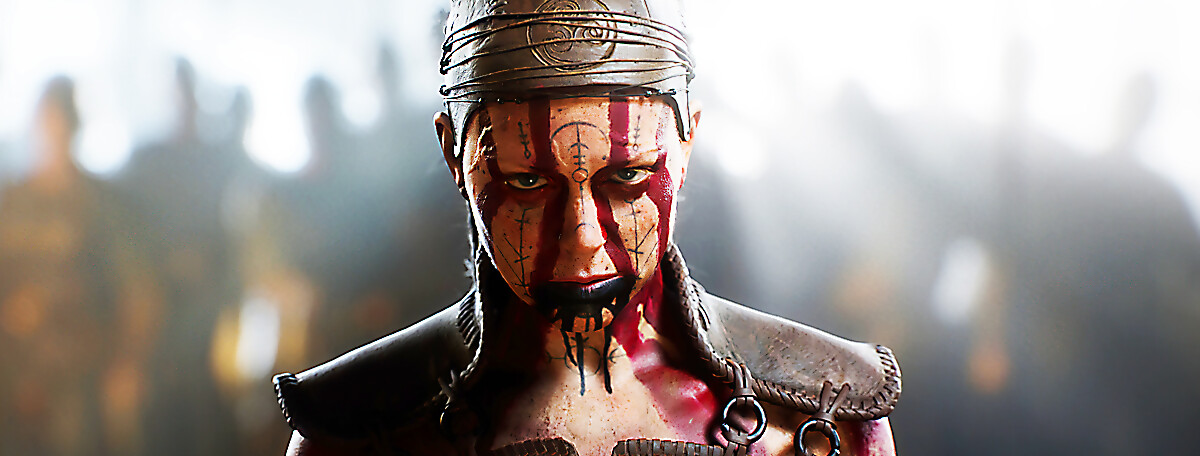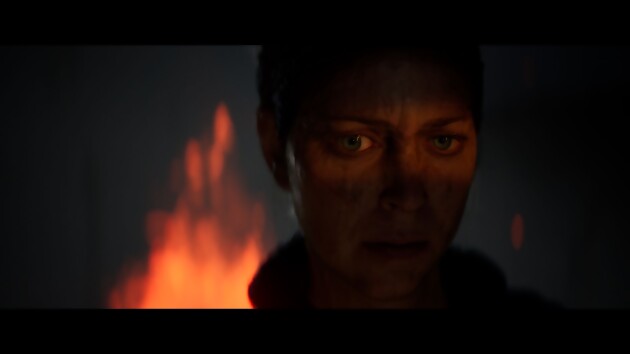
Microsoft and Xbox are often criticized for the lack of exclusives, especially on the Xbox Series X, and rightly so. But there is a big game coming on May 21st, Hellblade 2. In a little less than 2 months, we will finally be able to discover this sequel that has been teased since 2019. Yes, it’s been 5 years since we saw the very first video. But things seem to be accelerating and a week ago, an event was organized in Cambridge, at the Ninja Theory studios to be able to get hands-on with the game. A 45-minute hands-on session to see what the game looks like, what improvements have been made in the gameplay and especially the combat system, very few media outlets in the world were invited on site, but a lot of information has nevertheless emerged. I have gathered and condensed all the new and useful information to find out whether or not Hellblade 2 will be the technical and visual marvel that has been promised to us for 5 years. And to top it off, there are new gameplay images!
It has not escaped anyone and we have been talking about it for a while in our columns and editorial videos, but this console generation, whether on Playstation or Xbox, is quite disappointing, or disappointing if you prefer in good French. The truly next-gen games, with flawless technical aspects, offering 4K and 60fps, which were nevertheless promised with the PS5 and Xbox Series, it feels like it was all a bluff so far. There are several reasons for this: the pandemic to start with, which generated a problem with component supply and also lengthened the transition period between the previous generation and the next gen. And obviously, when developing games for the previous gen and the new gen, you can’t use all the resources of the new machines. Another reason: we can also question some working methods in certain studios, which lengthen development times and also nibble away at the production budget, but it is mainly that true next-gen tools, like Unreal Engine 5, took time to take shape on home consoles. And well, if there is one aspect on which Hellblade 2 will not disappoint the player, it is on the visual side. All the media and journalists who were invited to Ninja Theory unanimously agree: Hellblade 2 is a graphical marvel and it is obviously on this point that nothing has been degraded since the promises in 2019. The game promises to be photorealistic to a point where the details in the game are at the level of the veins in the character’s eyes. The English studio strives for perfection at all costs and it seems to be getting closer to it according to the feedback from the guests on site.
This is partly due to Unreal Engine 5 of course, but also to the talents of Ninja Theory, and the way in which they have been able to use the tools. The game promises a next-gen rendering, with ultra-detailed character modeling, extreme details, motion-captured animations for everything, and the integration of even more realistic facial expressions. For every movement, every action, Senua reacts accordingly. Senua grimaces when stabbing an enemy with her sword in Hellblade 2, tenses up when dodging attacks. This already exists in other games of course, but the rendering is taken to the extreme in Hellblade 2, and it is this emotional aspect that also makes the game next-gen in its fleshed-out envelope. However, this extreme level of detail comes at a price, that of frame rate, and unfortunately, Hellblade 2 will not run at 60 frames per second, despite being a corridor game above all. Ninja Theory confirmed to the media on site that the frame rate will be locked at 30fps, in order to prioritize stability and not to lose in visual quality either. This will further fuel the controversy surrounding the performance of current consoles…
Another very important detail that emerged from the Hellblade 2 previews is that Tameem Antoniades is no longer part of Ninja Theory. He apparently left the studio quietly, without any mention or public explanation. An Xbox executive present at the event confirmed this to the journalists on site. We are learning this today, knowing that he is one of the co-founders of Ninja Theory, the creative director of all the games up to now, and especially the one who was behind the 2013 Dante with the DmC Devil May Cry reboot and his emo look that caused quite a stir at the time. Tameem Antoniades has been replaced by three people: Dan Attwell, director of environmental art, Mark Slater, director of visual effects, and David Garcia, audio director. We don’t really know what happened for such an important man to leave the ship a few months before the game’s release, and especially that no one has talked about it, but in any case, it’s quite a brutal announcement… We’ll leave you to your own conjectures.
But let’s go back to Hellblade 2 and to this hands-on that allowed us to learn more about the game’s story, which takes place after the events of the first episode. If you haven’t played the first episode of 2017, I suggest you start, at least to understand what happens at the end. I remind you that we play as Senua, a young Pict warrior from the 10th century, whose peculiarity is to suffer from mental disorders and therefore hear voices. And what is interesting about this series is that at that time, having psychoses was not considered an illness, but rather a curse. As a result, Senua is a woman who has been rejected, humiliated, and above all isolated, and it is on this point that the game developed its gameplay, with a particularly developed and intense sound design, where every sound allowed to know where enemies could come from. The sound was as important as the visuals in the first Hellblade. The first Hellblade was a metaphor for the character’s struggle against her psychoses and the developers at Ninja Theory worked closely with mental health specialists and people living with the disease.
In this sequel, Senua still suffers from these psychoses, but she has managed to accept them and is able to control them better in a way. This is also why the developers wanted to evolve the game and gameplay. From now on, Senua will no longer be alone in her epic journey. She mourned her beloved at the end of the first episode and this time, Senua travels to Iceland in search of the Nordic slavers who are decimating her community in the north of the British Isles. If Senua will not be completely alone this time, the choice of Iceland remains a sort of analogy to loneliness, as the country is one of the most isolated in the world, with its desolate and beautiful landscapes at the same time. Ninja Theory describes Hellblade 2 as a love letter to Iceland and the teams went there to fully model the topography of Iceland. The game’s environments were created from scans captured by drones, satellite imagery, but also procedural photogrammetric generation. The idea is to convey the atmosphere and authenticity of the locations. There is an extreme geological contrast in Iceland’s landscapes, while the psychology of the Icelandic landscape closely matches that of Senua. We also remember that Hideo Kojima had also chosen Iceland to convey the solitude of Sam Porter, the hero of Death Stranding.
This means that the environments in Hellblade 2 will be more open, more varied, and less dark than the first one. At least on the surface, because this sequel will retain that mature, violent, and dark theme as well. Among the other evolutions of Hellblade 2, there is the gameplay and combat system. If the first episode was generally appreciated, some players found the combat too limited and this is something that Ninja Theory has taken into account. It’s not so much that the possibilities will be more numerous, but it’s in the staging and the veracity of the movements that will give another amplitude to the combat. As we can see in the new gameplay images that have been shared, it remains very directive and fixed on the same reading axis, but let’s say that new external elements will bring more dynamism to the events. However, there is a very visceral and brutal aspect that emerges from the combat, and this is due to the way Ninja Theory worked. Unlike other games, the fights were not animated, but they were all motion-captured, 100%. This means that all the movements in the fights were performed by actors and their human movements were all transposed into the game. The developers wanted to achieve a unique result, a kind of head-to-head confrontation, both slow and brutal. Each blow struck or avoided must be felt, so that this raw sense of violence in which Senua is immersed is conveyed. The developers at Ninja Theory are looking to create an emotional connection between Senua and the player and this is only possible if the things seen on screen are real and authentic. The camera is deliberately close to Senua’s character, precisely because the developers want to limit the player’s vision, so that they don’t really know where the danger is coming from. In fact, a bit like The Callisto Protocol, which had opted for the same visceral rendering, which many players did not understand, even though it was an already avant-garde proposition.
That’s what we could gather from these 45-minute hands-on previews of Hellblade 2. We also learned that the studio has grown since its beginnings. We went from 20 developers on the first Hellblade to 80 people. It’s more, but it remains low for the production of a game of this magnitude and if there are so few people, it is a real desire of Ninja Theory, who wants to keep its human size in its way of working. They want to keep the artisanal side, while continuing to make AAA games. This is to their credit, but on the other hand, it naturally requires more time. We’ll see on May 21st for the final verdict.







